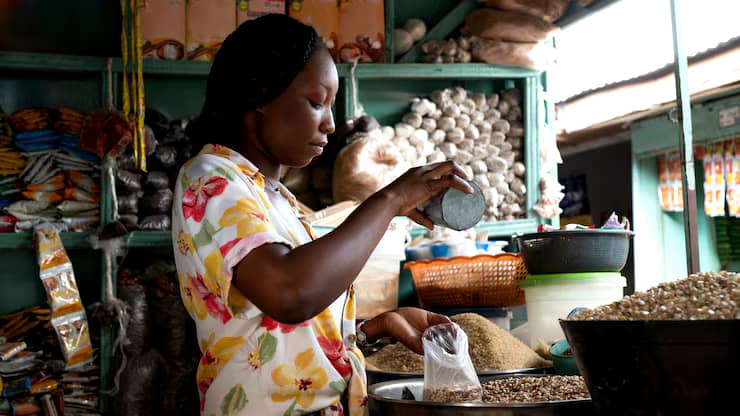“Although we have tried our best to keep the expenses low, our operating costs have increased significantly due to the global factors in recent times. This has brought us to a tough decision of a 10% general increase on all our products.” The above is an excerpt from a recent notice of a price increase by Garm, one of the streetwear shopping hubs in Lagos, Nigeria. Like Garm, many enterprises across the country cannot sustain operations at their former capacity. You can say that is one of the effects of the naira-dollar disparity.
Naira-Dollar Disparity Impact
In 2022, Glazia released an article examining the effects of the Naira-Dollar Disparity on Nigerian entrepreneurs. At the time of publication, the exchange rate stood at N710 to $1, marking the highest rate observed then. Current data as of 2022 revealed that the black market offered a dollar for N745. Two years later these rates have nearly tripled, with the dollar almost reaching the N2000 – $1 threshold in the past week.
Financial data from the country’s finance ministry shows that the consumer inflation rate rose for the 12th straight month in December to 28.92% year on year from November’s figure of 28.20%. Bloomberg data reveals that the inflation rate has consistently surpassed the upper limit of the central bank’s target range of 6% to 9% since 2015. Notably, food inflation constitutes a significant portion of the country’s inflationary index, surging to 33.93% in December from 32.84% the previous month, according to Reuters.

In 2022, during the initial and subsequent instalments of the articles in this series, the nation faced challenges, yet its citizens were unprepared for the severe economic downturn. Following a highly contentious electoral cycle, marked by the unprecedented three-way contest in the presidential election, uncertainty loomed among citizens as they navigated the early months of the new administration, uncertain of what the future held. Figures released on Monday by the National Bureau of Statistics revealed that the cost of 1 kilogram (2.2 pounds) of rice, a primary ingredient in preparing Jollof, a beloved Nigerian dish, surged by 98.5% compared to the previous year.
Increase in Operational Costs
Like Garm, numerous other Nigerian enterprises grapple with the dire economic downturn triggered by fluctuating currency exchange rates. Just a few weeks ago the exchange rate surged at least thrice within a day. This is causing challenges for business owners who struggle to maintain fixed product prices. Consequently, citizens endure financial hardship, while businesses face unstable market valuations.

The situation grows even more perplexing as citizens remain unaware of the underlying causes behind these fluctuating exchange rates. The country’s finance ministry remains silent, while the Central Bank of the Country alternates between issuing statements and memos and cracking down on Bureau de Change operators.
A Hope in Sight?
Towards the end of last week, the Central Bank of Nigeria made some reforms with Binance, the country’s foremost cryptocurrency trading platform. A move that saw the dollar drop to N1,380, and has since risen to N1,600 across different platforms, a situation that has birthed the question of how sustainable this can be, or if we’re to expect a rapid sudden increase in the coming days. After the NPC meeting in Abuja recently, the CBN Governor raised concerns about how over $26 billion has passed through Binance Nigeria. – “We are concerned that certain practices go on that indicate illicit flows, going through a number of these entities and suspicious flows. In the case of Binance, in the last year, $26 billion has passed through Binance Nigeria from sources and users whom we cannot adequately identify.”

The CBN also increased the country’s Monetary Policy Rate (MPR) by four hundred basis points to 22.75% from 18.75%. The MPR had remained at 18.75% since the last MPC meeting between 24th and 25th July 2023. With inflation at 29.90%, this adjustment in the MPR is aimed at addressing the country’s inflationary pressures. However, the lingering question remains; how soon can the country anticipate significant positive changes?
